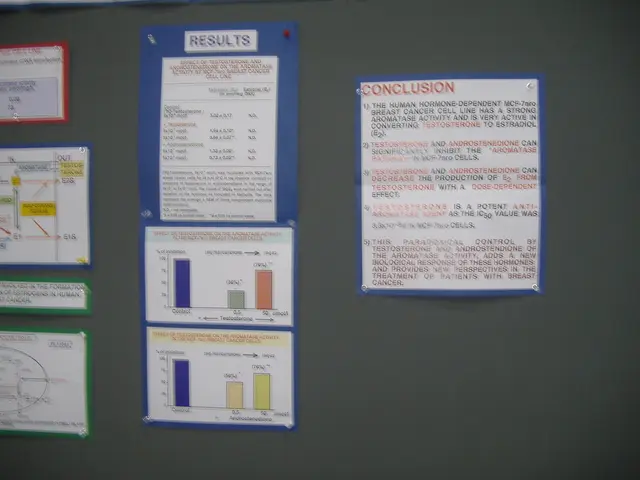Triggers for Migraines: Including visual, auditory, and olfactory stimuli, certain foods, and other factors
Migraines, a common neurological condition characterized by severe headaches and other symptoms, can be triggered by various factors. In this article, we explore common migraine triggers and strategies to manage them.
Bright or flashing lights and loud noises can provoke migraines in approximately 60% and 50% of people with migraines, respectively. Managing this includes avoiding exposure to intense or flashing lights, wearing sunglasses or blue-light blocking glasses, and using earplugs or noise-canceling headphones in noisy environments.
Strong odors such as perfumes, paint thinner, and secondhand smoke may also trigger migraines. Avoiding exposure to such scents helps reduce the risk.
Certain foods like aged cheeses, fermented foods, cured meats with nitrates, chocolate, alcohol, caffeine, and artificial sweeteners are common dietary triggers. Avoiding or limiting these foods based on personal sensitivity is advised.
Fluctuations in hormones, especially in women due to menstrual cycles, pregnancy, or menopause, often trigger migraines. Maintaining hormonal balance through medical consultation can help manage this.
Psychological stress is a frequent trigger. Stress management techniques, including regular exercise, relaxation practices like yoga, meditation, and adequate sleep, reduce migraine frequency and severity.
Just over a third of people who have migraine headaches say that certain types of weather sometimes bring about a migraine attack. While avoiding weather changes is not feasible, staying prepared by maintaining overall healthy habits and tracking patterns can help anticipate attacks.
Lack of sleep or irregular sleep patterns commonly precipitate migraines. Consistent sleep routines and ensuring sufficient rest are critical prevention methods.
People who have migraine attacks at least may want to consider preventive therapy. Anticonvulsants, beta-blockers, calcium channel blockers, antidepressants, botulinum toxin A, Aimovig and similar drugs, which block the action of a molecule called calcitonin gene-related peptide, may help prevent migraine attacks.
In addition to these strategies, making a list of stressors and attempting to reduce these in a person's daily life can help reduce migraine attacks. Biofeedback therapy, meditation, exercise, relaxation therapy, and developing or maintaining a regular sleep schedule can be beneficial for managing migraines.
Home remedies such as ginger and peppermint oil may alleviate migraine symptoms when applied or ingested, alongside lifestyle modifications emphasizing hydration, sleep, and trigger avoidance.
Combining these approaches tailored to individual triggers, identified through careful tracking, offers the best chance to minimize migraine occurrence and intensity. Professional medical advice is recommended for diagnosis and comprehensive treatment planning.
- Approximately 60% of people with migraines find their headaches are provoked by bright or flashing lights, necessitating avoiding exposure to intense or flashing lights, wearing sunglasses or blue-light blocking glasses, and using earplugs or noise-canceling headphones in noisy environments.
- Managing psychological stress, a frequent migraine trigger, involves regular exercise, relaxation practices like yoga, meditation, and adequate sleep, which reduce migraine frequency and severity.
- Just over a third of migraine sufferers say that certain types of weather sometimes bring about a migraine attack, making it crucial to stay prepared by maintaining overall healthy habits and tracking patterns.
- Lack of sleep or irregular sleep patterns commonly precipitate migraines, underscoring the importance of consistent sleep routines and ensuring sufficient rest as critical prevention methods.
- People who have migraine attacks at least may want to consider preventive therapy, including anticonvulsants, beta-blockers, calcium channel blockers, antidepressants, botulinum toxin A, Aimovig and similar drugs, which block the action of a molecule called calcitonin gene-related peptide, to help prevent migraine attacks.
- In addition to these strategies, making a list of stressors and attempting to reduce these in a person's daily life can help reduce migraine attacks. Biofeedback therapy, meditation, exercise, relaxation therapy, and developing or maintaining a regular sleep schedule can be beneficial for managing migraines.
- Home remedies such as ginger and peppermint oil may alleviate migraine symptoms when applied or ingested, alongside lifestyle modifications emphasizing hydration, sleep, and trigger avoidance. Combining these approaches tailored to individual triggers, identified through careful tracking, offers the best chance to minimize migraine occurrence and intensity, with professional medical advice recommended for diagnosis and comprehensive treatment planning.







